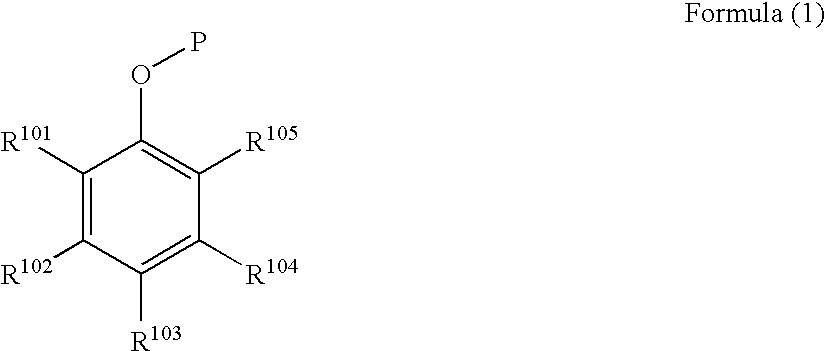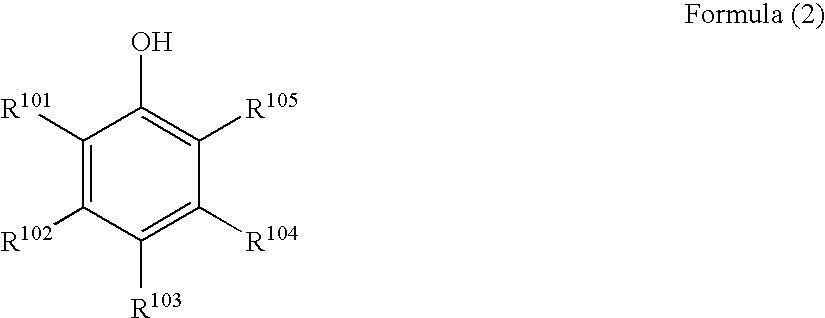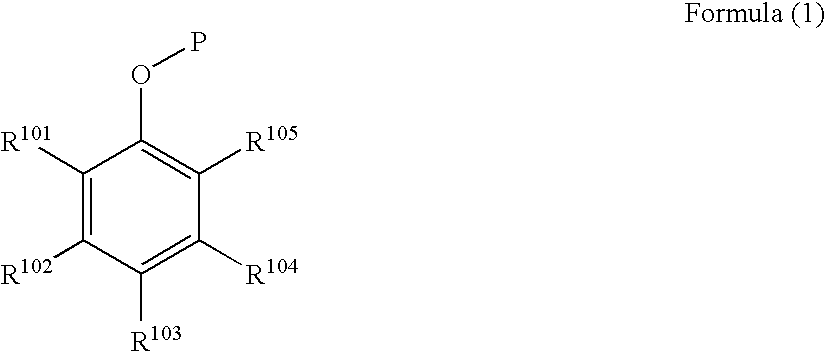Black and white photothermographic material and image forming method
- Summary
- Abstract
- Description
- Claims
- Application Information
AI Technical Summary
Benefits of technology
Problems solved by technology
Method used
Image
Examples
example 1
1. Preparation of PET Support and Undercoating
1-1. Film Manufacturing
[0546] PET having IV (intrinsic viscosity) of 0.66 (measured in phenol / tetrachloroethane=6 / 4 (mass ratio) at 25° C.) was obtained according to a conventional manner using terephthalic acid and ethylene glycol. The product was pelletized, dried at 130° C. for 4 hours, and colored blue with a blue dye (1,4-bis(2,6-diethylanilinoanthraquinone). Thereafter, the mixture was extruded from a T-die and rapidly cooled to form a non-tentered film.
[0547] The film was stretched along the longitudinal direction by 3.3 times using rollers of different peripheral speeds, and then stretched along the transverse direction by 4.5 times using a tenter machine. The temperatures used for these operations were 110° C. and 130° C., respectively. Then, the film was subjected to thermal fixation at 240° C. for 20 sec, and relaxed by 4% along the transverse direction at the same temperature. Thereafter, the chucking part was slit off, ...
example 2
1. Preparation of Silver Halide Emulsion
[0664]>
[0665] A liquid was prepared by adding 3.1 mL of a 1% by weight potassium bromide solution, and then 3.5 mL of 0.5 mol / L sulfuric acid and 31.7 g of phthalated gelatin to 1421 mL of distilled water. The liquid was kept at 30° C. while stirring in a stainless-steel reaction vessel, and thereto were added a total amount of: solution A prepared through diluting 22.22 g of silver nitrate by adding distilled water to give the volume of 95.4 mL; and solution B prepared through diluting 15.3 g of potassium bromide and 0.8 g of potassium iodide with distilled water to give the volume of 97.4 mL, over 45 seconds at a constant flow rate. Thereafter, 10 mL of a 3.5% by weight aqueous solution of hydrogen peroxide was added thereto, and 10.8 mL of a 10% by weight aqueous solution of benzimidazole was further added. Moreover, a solution C prepared through diluting 51.86 g of silver nitrate by adding distilled water to give the volume of 317.5 mL a...
example 3
[0695] 1) Preparations of Sample
[0696] Black and white photothermographic materials were prepared similar to Example 1 except that the silver halide emulsion used was changed to the silver halide emulsion which was subjected to gold-sulfur sensitization; and the compound represented by formula (1), the reducing agent represented by formula (5), and the development accelerator were changed as shown in Table 5.
[0697] 2) Evaluation
[0698] Evaluation with regard to photographic properties and storage stability was performed similar to Example 1. The obtained results are shown in Table 6.
TABLE 5Compound ofReducing AgentDevelopmentFormula (1)of Formula (5)AcceleratorCoupler*Coating*Coating*Coating*CoatingSampleAmountAmountAmountAmountNo.No.(mmol / m2)No.(mmol / m2)No.(mmol / m2)No.(mmol / m2)Note301——3-40.7——CC-30.7Comparative3021-10.7————CC-30.7Invention3031-40.7————CC-30.7Invention304——3-60.7——CC-30.7Comparative3051-70.7————CC-30.7Invention3061-120.7————CC-30.7Invention307——3-260.7——CC-30.7...
PUM
 Login to View More
Login to View More Abstract
Description
Claims
Application Information
 Login to View More
Login to View More - R&D
- Intellectual Property
- Life Sciences
- Materials
- Tech Scout
- Unparalleled Data Quality
- Higher Quality Content
- 60% Fewer Hallucinations
Browse by: Latest US Patents, China's latest patents, Technical Efficacy Thesaurus, Application Domain, Technology Topic, Popular Technical Reports.
© 2025 PatSnap. All rights reserved.Legal|Privacy policy|Modern Slavery Act Transparency Statement|Sitemap|About US| Contact US: help@patsnap.com



